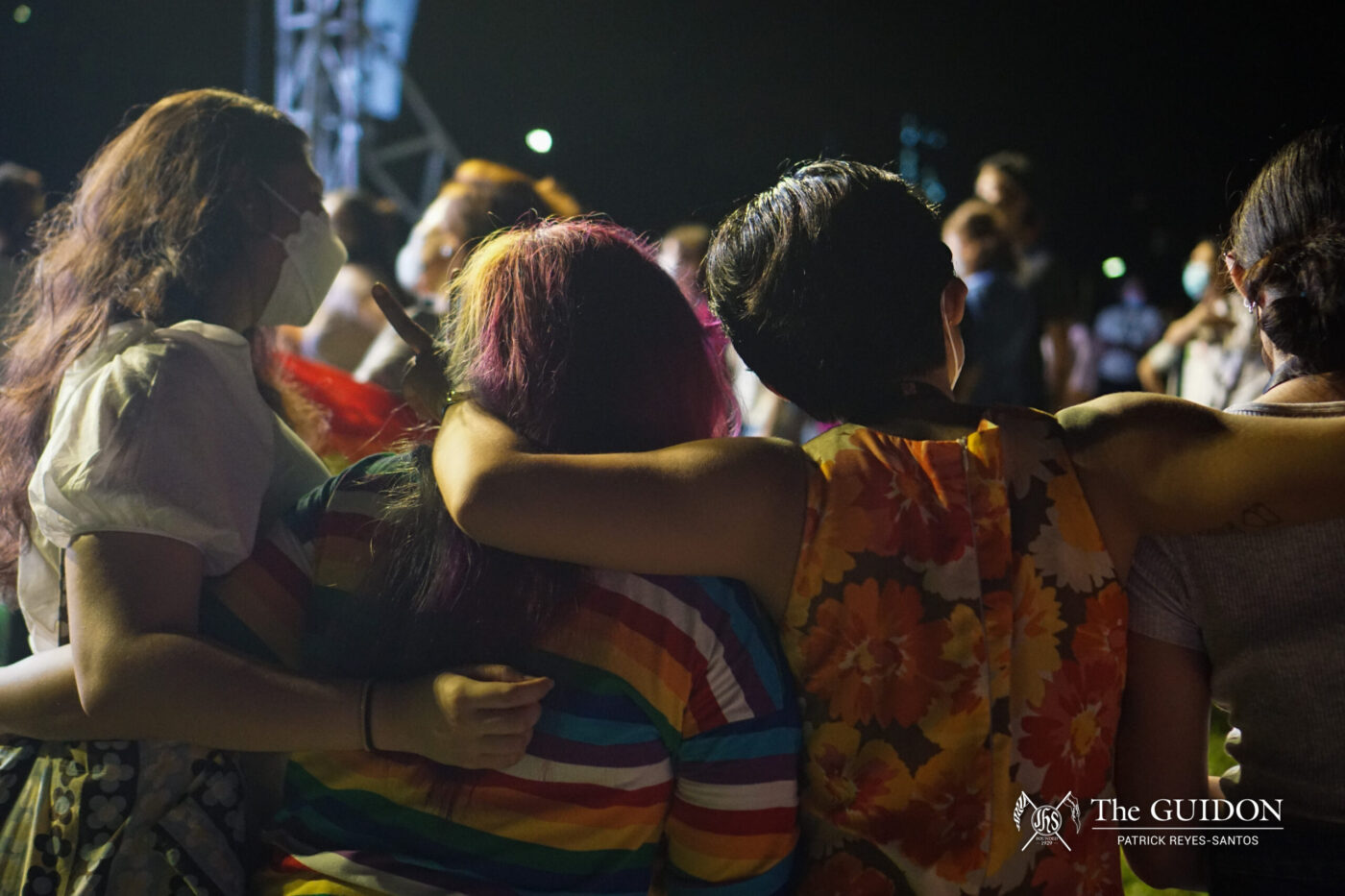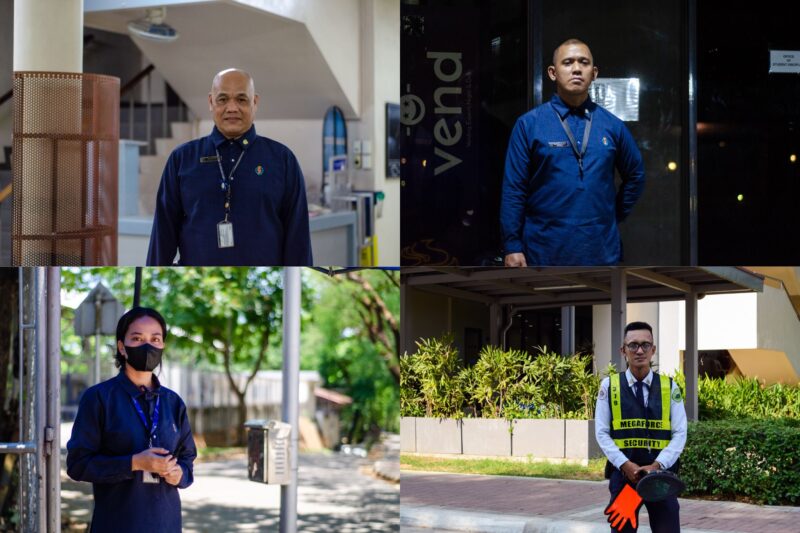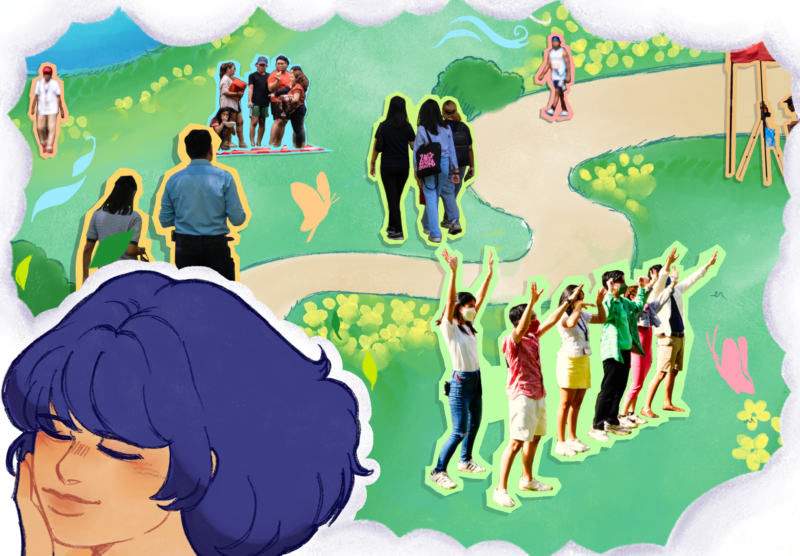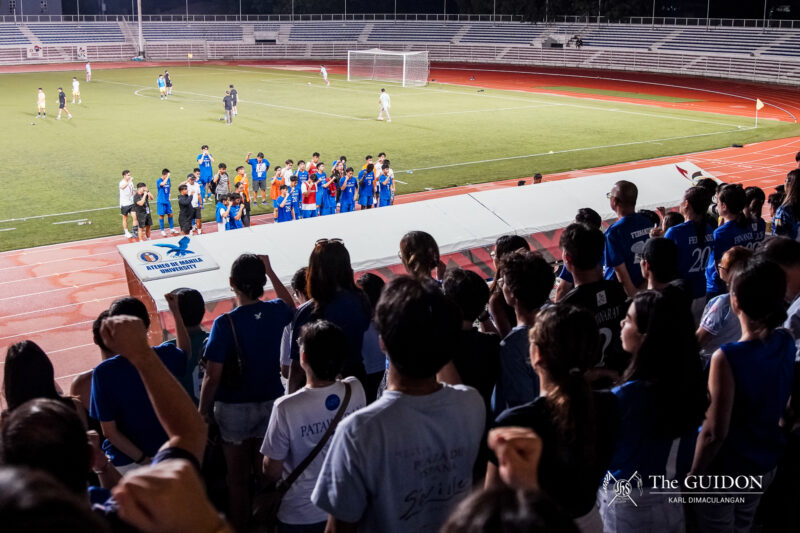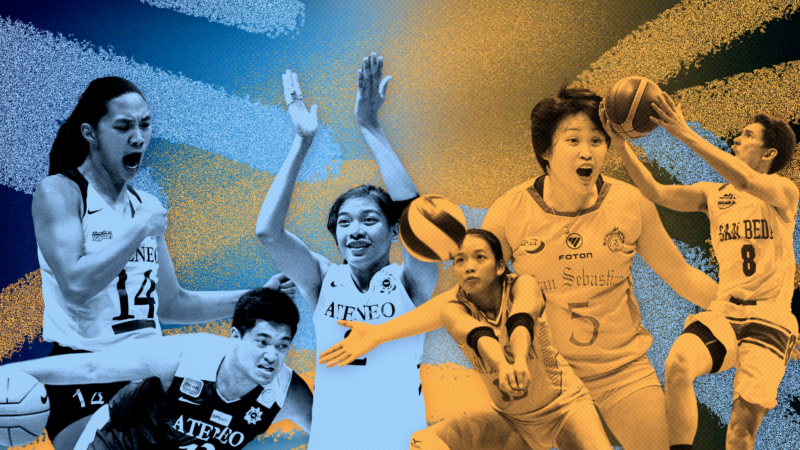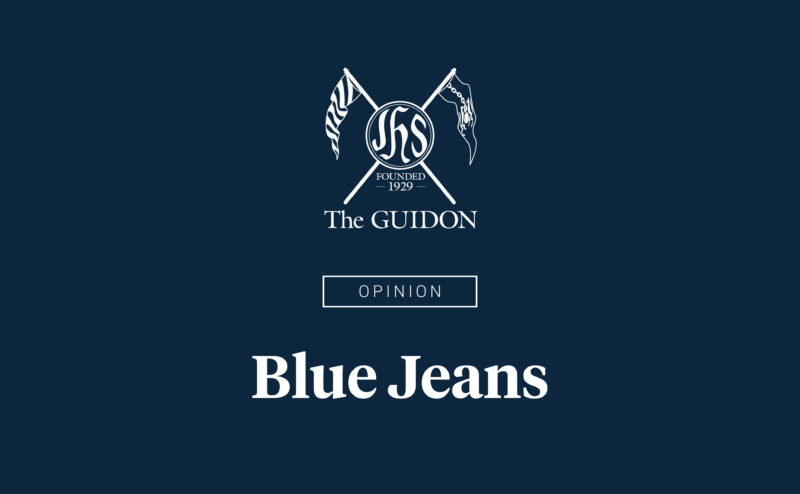After two years holed inside their homes, celebrants of Pride take to the streets and fill spaces, marching once more for empowerment and identity.
ANTICIPATORY CHATTER and expectant laughter echoed in the Ateneo de Manila University’s Xavier Hall on the afternoon of October 11. Despite the limited space that the venue held, an unexpectedly large number of students were present to stand for Pride.
Lingering in the crowd of people holding rainbow flags and humorous signs was the spirit of an accepting community. Marchers gathered and chanted together despite the risk of COVID-19, outsiders’ opinions, and the disapproving stares and degrading comments they may face after it ends—this courage is what it means to celebrate One Big Pride (OBP).
An unprecedented Pride
OBP, in all its celebratory iterations, is an opportunity to establish a communal space of belongingness and empowerment. It is also a chance for communities that often seem oppositional to advocate for the cause. For instance, people from the Ateneo Christian Life Community and the Ateneo Student Catholic Action took the opportunity to march alongside their co-member and LGBTQ+ member, Thoma*.
“I would think, in 2017, when I attended my first Pride, that these orgs wouldn’t be supportive of this event, of me as a person and my identity, [but] they were there with me…. [It] felt empowering that they were chanting the chants with me,” he shares.
As the sun set and the spotlights came on, University President Roberto “Bobby” Yap, SJ then took to the stage in Bellarmine Field to give the event’s opening remarks, amazing and delighting Thoma. “[It] speaks a lot [about] what the University stands for and how this Pride was planned out so that Ateneans can feel that they belong in a community [that is] visible,” he says.
This sense of unity between the seemingly disjointed worlds is clearly a powerful politicization of the campus space. Clearly, space is political.
This is the type of metaphoric significance that Karl Borromeo, Human Resources Deputy of the Sanggunian’s Commission on Gender Equality (CGE), ascribes to the vast Bellarmine Field, which served as OBP’s main venue. “[This location] really aligns with what we want Pride to be. What we want Pride to be is for it to be as visible as it can be—for it to be as loud, as seen, to as many Ateneans, or outsiders, or faculty, as we can reach,” he says.
Borromeo shares that positioning the stage in front of the Church of the Gesù was another intentional choice of OBP’s organizers. “[The positioning] is a statement that is firm enough for others to be disrupted, especially the ones that disagree,” he expresses.
By endorsing the event with this imagery, the Ateneo announced to a conservative nation that it is standing against homophobic ideals and cultural mores.
Thus, OBP transformed this act of defiance against discriminatory and repressive norms into something more tangible, enabling participants to feel seen and secure during the march. Returning to onsite Pride celebrations made Dani*, a closeted bisexual Atenean, feel part of a safe, welcoming, and non-judgmental community—one that she did not have growing up in her prior Catholic school. “I think physical and tangible spaces that I can actually see and be in [serve] as a vessel to celebrate the spirit of Pride,” she says.
Establishing a safe space
While physical spaces set the stage for Pride celebrations, the people present were the ones responsible for generating the palpable sense of community. “Not the performances, not the venue per se, really it was [the people who] made that day filled with Pride and filled with so much love,” Borromeo echoes.
Fortunately, this sense of belongingness within University spaces transcends the OBP celebrations, finding its way into everyday student life.
Thoma, a host of Tanghalang Ateneo’s current workshops, acknowledges and suggests that organizations are where openness and acceptance in the Ateneo often solidifies.“Ang daming bakla sa orgs na bilang ako, and we revel in our kabaklaan, so parang masaya to belong (There are lots of gay people in the student organizations I’m part of, and we revel in our gayness, so it makes me feel happy to belong),” he says.
However, an accepting and kind community may prove to be insufficient as safe spaces are sometimes infiltrated by individuals with malicious motives. For example, Thoma alleges that he was followed by his harasser throughout campus, coloring his perspective of the University and its culture. He says that, even in the online setting, his harasser joined one of his organizations and would purposefully make him feel uncomfortable in their Zoom calls.
Wanting to remain optimistic—especially in the aftermath of the 2019 protests against sexual harassment within the Ateneo—Thoma sincerely believes that Ateneans are slowly changing to create a safer and more accepting campus. “A lot of mechanisms have been implemented by the admin, the Sanggunian, and everyone else, even [the Office of Student Activities ],” he explains. “Even though I’m bringing that trauma with me, I’m 99% sure it’s less likely to happen [because] of all the safety nets[, and] the Loyola Schools community assured me that it won’t happen again.”
Ultimately, the physicality of protests such as OBP force passersby and perpetrators to confront such salient issues visibly, elevating a sense of awareness and accountability among the community.
A cause that binds and unites
Aside from making students feel safe to express themselves, the larger purpose of OBP is to serve as a recollection—a defiant one at that. “Pride for me is the culmination of all our yearnings for the community. In Pride celebrations, we see not only the fruits of our labor but also the history of it, the things that we have fought for in the past,” Borromeo says.
Today, an LGBTQ+ sector has yet to be established in the Ateneo, although it has been in the works since last year. Borromeo argues that this sector will enable the LGBTQ+ community in the Ateneo to have a formal vote in the Sanggunian Central Assembly, the legislative arm of the student body. Thus, the LGBTQ+ student community will be able to enjoy greater involvement in both policy and policymaking.
Because such bodies and policies give and sustain the life of the LGBTQ+ community, the physical places occupied by communities are often thought to be secondary in importance.
However, the combination of physical spaces and people in service makes for a celebration of Pride that is all the more visible, significant, and sustainable. “We also want to leave a message of [resistance and] hope [that] will pave the way for a future that is less traumatized, a future that is more prideful, that is more proud—a future that is more whole,” Borromeo asserts.
*Editor’s Note: The interviewees’ names have been changed at their request to protect their identity and privacy.
—

